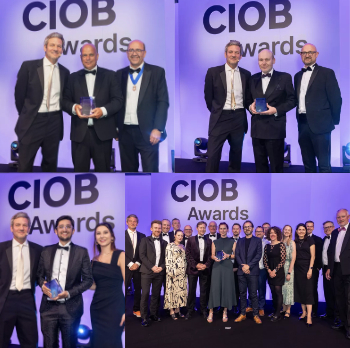Non-woven abrasives market
Abrasives are commonly used in a variety of applications such as grinding, abrading, and cleaning objects to give them a particular shape and finish. Abrasives can be; bonded, non-woven, coated or loose abrasive. Non-woven abrasives play a vital role in metal finishing, where they are resilient, comfortable, waterproof, non-loading and non-rusting.
Technological advancements and an increase in overall trade and transportation globally are expected to fuel growth in the non-woven abrasives market, particularly in China and India.
The major driving factor for non-woven abrasives market is the growth of the transportation, construction, and manufacturing sectors in India. Increasing construction activities in India over the past couple of years has increased the demand for non-woven abrasives. Moreover, initiatives taken by the Indian government under the ‘Make in India’ project to grow industrial and manufacturing activities in the region is expected to drive the market further. However, the market is experiencing low-profit margins due to volatility in crude oil prices.
The Indian non-woven abrasives market was valued at USD 125.68 million in 2015 and is expected to reach USD 176.72 million in 2021, growing at a CAGR of 5.69% between 2016 and 2021. In term of volume, Indian non woven abrasives market stood at 54.65-kilo tons in 2015.
Construction, household, transportation, electronics & semiconductors and others such as industrial application i.e. machinery, medical devices etc. are the end-user segment of non-woven abrasives market. Other segments, which include industrial applications such as machinery, and medical devices accounted for the largest share of the market in 2015, accounting for 35.14% in terms of volume.
The Asia Pacific dominated the global abrasives market in 2015 and is expected to lead the market during the forecast period, due to rising demand for abrasives in developing economies such as India and China, rising population and rising demand for transportation.
Some of the key player for Indian non-woven abrasives market include; AE Abrasives Edge Pvt. Ltd, Osborn, Steel Shine (Uppal India), Sia Abrasive (A Bosch Company), Samadhan Group, Stacke Abrasives India Pvt. Ltd, Saint-Gobain (Grindwell Norton), Wolcut Abrasives Private Limited, Scrubex Corporation, Amazon Brush Company, Humac Abrasives Private Limited and Mirka Ltd. Grindwell Norton ( the same subsidiary of Saint-Gobain) and Carborundum Universal. In 2014, Carborundum suffered a fall in its margin due to rising power and fuel costs, while Grindwell effectively saved their margin by purchasing key raw material silicon carbide from their supplier.
Featured articles and news
Licensing construction in the UK
As the latest report and proposal to licence builders reaches Parliament.
Building Safety Alliance golden thread guidance
Extensive excel checklist of information with guidance document freely accessible.
Fair Payment Code and other payment initiatives
For fair and late payments, need to work together to add value.
Pre-planning delivery programmes and delay penalties
Proposed for housebuilders in government reform: Speeding Up Build Out.
High street health: converting a building for healthcare uses
The benefits of health centres acting as new anchor sites in the high street.
The Remarkable Pinwill Sisters: from ‘lady woodcarvers’ to professionals. Book review.
Skills gap and investment returns on apprenticeships
ECA welcomes new reports from JTL Training and The Electrotechnical Skills Partnership.
Committee report criticises UK retrofit schemes
CIOB responds to UK’s Energy Security and Net Zero Committee report.
Design and construction industry podcasts
Professional development, practice, the pandemic, platforms and podcasts. Have we missed anything?
C20 Society; Buildings at Risk List 2025
10 more buildings published with updates on the past decade of buildings featured.
Boiler Upgrade Scheme and certifications consultation
Summary of government consultation, closing 11 June 2025.
Deputy editor of AT, Tim Fraser, discusses the newly formed society with its current chair, Chris Halligan MCIAT.
Barratt Lo-E passivhaus standard homes planned enmasse
With an initial 728 Lo-E homes across two sites and many more planned for the future.
Government urged to uphold Warm Homes commitment
ECA and industry bodies write to Government concerning its 13.2 billion Warm Homes manifesto commitment.
From project managers to rising stars, sustainability pioneers and more.
Places of Worship in Britain and Ireland, 1929-1990. Book review.






















